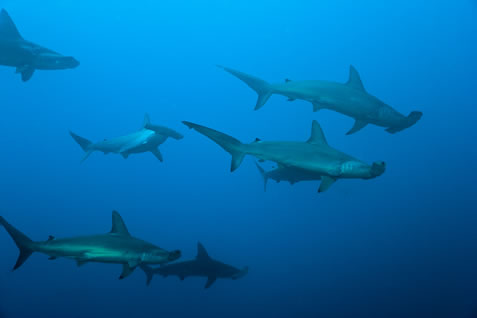Few tourist destinations garner the type of shameless, heaping praise that Costa Rica has long enjoyed. Much of it is deserved. Costa Rica, in the eyes of millions of travelers who arrive here each year, is the birthplace of international ecotourism, home to the scarlet macaw and the howler monkey, verdant rainforests, rumbling volcanoes, and, of course, the perfect wave.
 photo by George Duffield
photo by George Duffield
The facts, when viewed through the green-tinted glasses of tourism promoters, corroborate this feeling. National parks and biological reserves – including pristine turtle-nesting beaches, waterfalls, hot springs, and high mountain peaks – cloak 25 percent of the country. Forest cover has jumped from little more than 10 percent in 1950 to more than 50 percent today, making Costa Rica one of the few countries in the world to reverse deforestation. And as industrialized countries bumble toward a global energy crisis, Costa Rica produces more than 80 percent of its energy from renewable sources.
But Costa Rica has always been graded on a curve, and for every plus there is a more nuanced minus. As more and more of the country cedes to overzealous real estate development, its calling-card biodiversity is ailing, the rainforests chopped up for condos and luxury villas. Monkey populations are plummeting. Coral reefs are dying, infested by sewage- and fertilizer-feeding algae that cover their bony surface. Sea turtles, a Costa Rican all-star, are losing their nesting beaches as foreigners populate the coast with Miami-style developments. And much of the capital’s sewage is being pumped directly into the tributaries of the Rio Tarcoles, the most polluted river system in Central America, and from there out to sea.
The massive resorts and beachside bungalows face the same problem: how and where to dispose of their waste. Tourists at many Costa Rican hotels are eco-conscious in every way but one. They take quick showers to conserve water, wash their towels once a week, and like their food organic. But it seems the one thing all ecotourists must leave behind is the only one they never think to ask about.
Scientists and recreational scuba
divers are working to protect the
spectacular marine life in the waters
around Costa Rica’s Cocos Island
…more…
“Tourists worry a lot more about what goes into their bodies than what goes out,” says Costa Rica ecotourism pioneer Michael Kaye, who has owned hotels here for 30 years.
Ignorance was bliss until recently. In 2008, a local activist group called the Guanacaste Brotherhood Association revealed that the sewage treatment plant at one of the country’s largest hotels had failed. The resort was trucking the consequence, sometimes 50 loads a day, to illegal dumpsites throughout the impoverished countryside. The revelations would help shut down the Allegro Papagayo Resort amid peak tourist season, sending 500 gringos packing on their one week of vacation a year.
The closure of one of the country’s biggest all-inclusives snapped legions of tourism promoters from their stupor. Costa Rica’s dirty little secret had slipped out. Not even its national parks were immune. In 2009, Manuel Antonio National Park, the country’s most popular, was shut down when authorities revealed that park visitors were leaving behind last night’s rice and beans in the natural lagoons behind its “pristine” white-sand beaches. Tamarindo, a surf town once the favorite of Robert August, of Endless Summer fame, had allowed runaway development to taint its perfect wave with fecal coliform levels far above US Environment Protection Agency guidelines. Pollution was compromising the leatherback sea turtle’s protected nesting site at neighboring Playa Grande National Park.
A 2007 US State Department cable from the embassy in San Jose (which was leaked last year) summed up the situation: “Costa Rica Not Paradise – Raw Sewage Everywhere,” the memo said. At the time, less that 3 percent of the country’s human waste was being treated, according to embassy staffers.
In the years since the Guanacaste Brotherhood’s sleuthing revealed the sewage problem, the media has pounced. Dozens of hotels have been shut down, restaurants shuttered, beaches closed. Suddenly, it seemed, people cared – and not just prissy foreigners counting carbon emissions. Costa Ricans, too, were worried. In 2010, continuing public outrage prompted Costa Rican officials to finally sign a five-year contract with a foreign consortium to begin constructing a massive, $270 million sewage system in the country’s heavily-populated Central Valley, a project that had been sidelined for years because of indecision and bumbling bureaucracy.
In a region still haunted by war and poverty, hotelier Kaye acknowledges that this newly awakened consciousness could only have happened here.
Only in Costa Rica, he says, could sewage have raised such a stink.
—Dave Sherwood
We don’t have a paywall because, as a nonprofit publication, our mission is to inform, educate and inspire action to protect our living world. Which is why we rely on readers like you for support. If you believe in the work we do, please consider making a tax-deductible year-end donation to our Green Journalism Fund.
DonateGet four issues of the magazine at the discounted rate of $20.